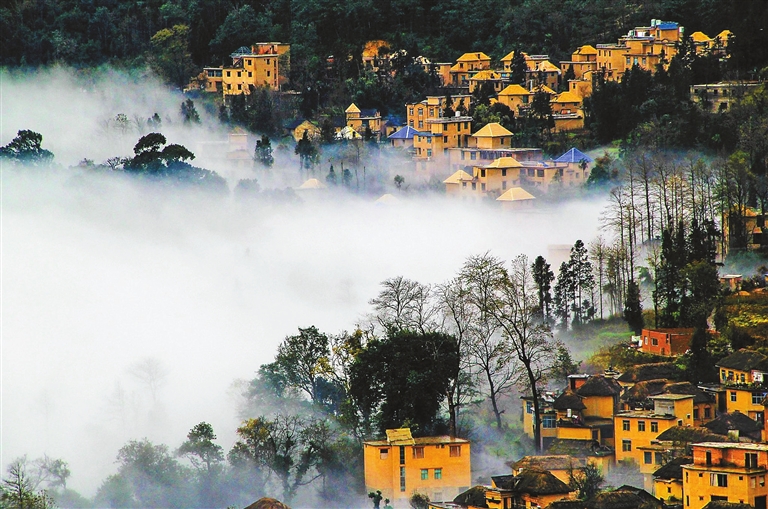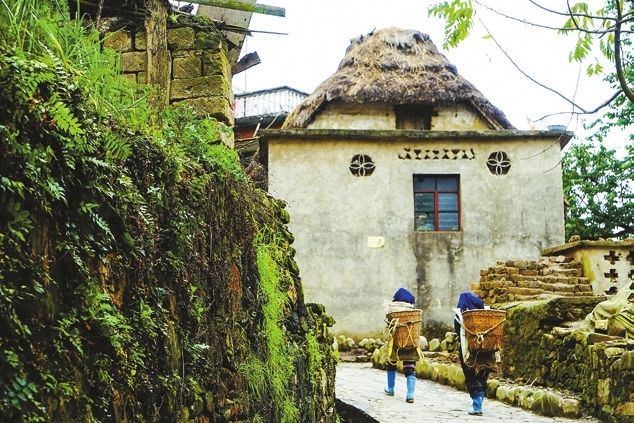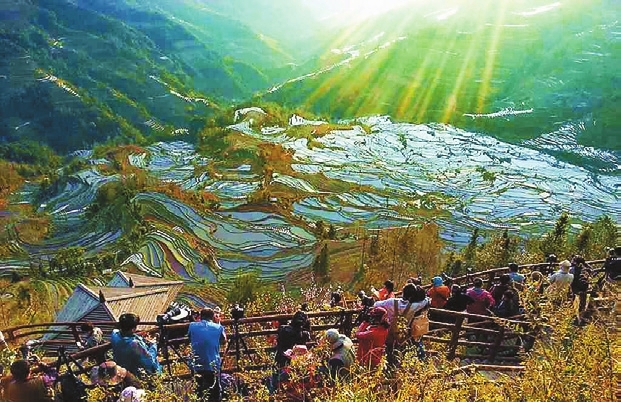



IN the 1990s, French photographer Yann Layma stunned the Western world with images of cascading rice terraces in Southwest China. Today, the agricultural wonder remains as grand as ever, while the people there are living more radiant lives. The rice terraces in Yuanyang county in Yunnan Province made it to the UNESCO World Heritage List in 2013. They were created by the ethnic group Hani — who mostly inhabits the area across the Ailao Mountains. “I’ll show you how to catch fish,” Ding Ji’nan, a 24-year-old Hani social media enthusiast, says as she introduces life on the terraced fields to audiences across the country via a short-video platform. Ding quit her job years ago and returned to her hometown, setting up a new media team introducing ethnic traditions and the local landscape online to the outside world. In March 2019, the team uploaded their first video, in which Ding, resplendent in her traditional Hani clothing, shared the process of making local pastries. The rural lifestyle has attracted an increasing number of viewers to her channel and the young woman has come to be known as a spokesperson of the Hani rice terraces. Ding’s efforts have further raised the profile of the agricultural heritage and at the same time, transformations have been taking place. In 2016, 49-year-old Yue Shao returned to Yuanyang and established a company dedicated to the research and development of crop breeding on paddy fields. Yue’s company launched a platform that allows purchasers to trace the origin of the agricultural products. In addition, a smart service platform was developed to facilitate unmanned monitoring of seedlings and remote consultations regarding crop diseases in paddies where ducks and fish are bred as well. The creative ecosystem has proven a success. Statistics from authorities show that since 2017, more than 35.64 million yuan (US$5.46 million) has been invested in the heritage site to facilitate the transition to the rice-fish-duck ecosystem on more than 2,100 hectares of farmland. It has driven 7,320 households to embrace modern farm life, generating more than 152,600 yuan per hectare. New projects, agricultural modes and ways of life have emerged. Despite the sweeping changes taking place, the Hani people still proudly embrace their traditional culture. Azheke, a village located in a core area of the heritage site, is a living museum displaying the Hani people’s traditional housing — mostly consisting of mud and wood with straw roofs. In the past, the villagers’ income was so meager that most young people chose to work outside their village. The old houses were crumbling, posing a threat to the inheritance of the Hani traditions and culture. In January 2018, a team led by Bao Jigang, a professor at Sun Yat-sen University in Guangdong, came to investigate the traditional housing at the invitation of the local government. The team proposed an “Azheke plan” — motivating villagers to protect their traditional houses via a dividend system. A tourism company was set up in 2018, with 65 households receiving 70 percent of its share. In 2020, the villagers’ per capita net annual income through the system exceeded 6,300 yuan. In late March, villagers received the latest dividends totaling 168,000 yuan. Wang Ranxuan, Azheke’s village chief, said tourism has brought luster back to the ancient village, thanks to a tourism development plan that “strikes a fine balance between commercialization and preservation of traditional culture.” To prevent overtourism, the number of restaurants and guesthouses in the village are both capped at five. Wu Canxi, a senior Sun Yat-sen University student, has seen remarkable changes in the villagers’ lives since she came to the village to conduct a field study and survey in January. Now, most can speak Mandarin, with some also speaking a few words of English and skillfully use computers to settle accounts. Wu has provided advice for the tourism company’s operation and training programs for villagers. “The key is that everyone knows that they can protect their culture while earning a living, so they voluntarily devote themselves to it,” says Wu. Now Azheke Village is a backpackers’ paradise. One can rub shoulders with local farmers when trekking through the millennium-old Hani rice terraces, or enjoy Zen-like peace while staying in a traditional thatched village house. (Xinhua) | 
